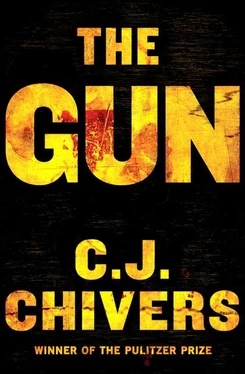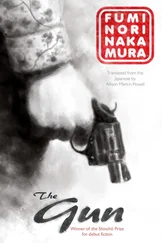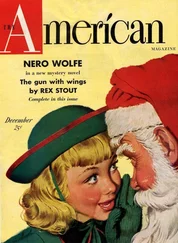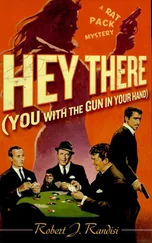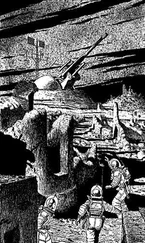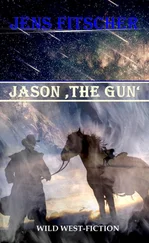The processes that completed the Kalashnikov assault rifle’s march out of communist garrisons were not random. They resulted from deliberate socialist arms-manufacturing, stockpiling, and transfer practices, followed by many means of distribution—some legal, some not—that followed.
After the establishment of Kalashnikov factories in the 1950s and 1960s, the early circulation of rifles followed predictable paths. The Soviet Union and other communist nations armed the Viet Cong and the North Vietnamese Army, equipping ideological partners for a war carried by ideological currents. Similarly, the gifts of AK-47s and an ammunition plant to Fidel Castro’s Cuba during the 1960s fit with the mandates that armed the Warsaw Pact. These recipients were Kremlin allies. But as weaponry of Soviet provenance shaped socialist military forces around the globe, the Kremlin was also providing assault rifles and other armament to Arab states, seeking to blunt Western influence in the Middle East. By 1967, all of this was visible—as obvious as the Kalashnikovs in the hands of the NVA regulars in Vietnam, and as tangible as the piles of Kalashnikovs collected by the Israel Defense Forces after their defeat of Egypt’s battalions in the Six Day War. [30] In one famous image, the cover of Life magazine displayed a young Israeli soldier, soaked and grinning, as he frolicked in the Suez Canal with a captured Kalashnikov.
The state-to-state transfers were also unsurprising. They were for wars fought in an orthodox way, by forces whose organization and tactics were doctrinal and familiar. In the early years of its proliferation, the AK-47 was a calling card, an explicit mark of the socialist hand in wars in which its weapons appeared, even in wars, like the Six Day War, that were watched uneasily within the Kremlin and by the Eastern bloc’s ruling elite.
The transfers of assault rifles to Arab governments were scarcely remarked upon as they occurred. Diplomats and commentators concentrated on Soviet military hardware thought to be more menacing—the artillery, tanks, armored personnel carriers, radar systems, missiles, and aircraft that might change the regional security equation. Rifles were just rifles. Who worried over a weapon with a range of a few hundred meters, which injured its victims bullet by bullet, when a neighboring state was updating its jet fighters and main battle tanks? What was lost to the security experts of the era was a process more dangerous than the introduction to the region of larger-ticket conventional arms: the prodigious migration of the rifle from state garrisons to those bent on unconventional war and crime. By the late 1960s, the ingredients enabling this migration were in place. Assault-rifle production had reached such levels that socialist military forces were well supplied, the proxy fights were established, and new armed political movements had taken shape. The movements represented a mix of nationalist, religious, and ethnic ambitions, and were organized by leaders willing to exploit arming opportunities made available by the Cold War. Within a very few years the Kalashnikov’s attributes—its mechanical characteristics combined with its unprecedented availability—transformed Stalin’s rifle, conceived as a tool of the state, into an engine for violence in the service of almost any cause.
Two phenomena paired to ensure this outcome. One was a socialist behavior: stockpiling, a behavior linked to the excessive rifle production in planned economies. The second was a capitalist axiom: the unrelenting energy of markets. Once excess socialist assault rifles existed, market forces ensured that they moved. Political motivations, not the laws of demand and supply, were often behind early distributions. Moscow, Beijing, and Pyongyang provided rifles to curry favor among potential allies or to disrupt the activities of the West. Hard currency in return was welcome, but other motivations shaped deals. With time, rifles transferred in this way were redistributed by brokers and gun-running networks unencumbered by political concerns. Assault rifles became commodities. They recirculated by truck, train, containership, airplane, animal train, and brokerage. They often moved for profit alone. This migration accelerated throughout the later Cold War years and then beyond, when the stockpiles, less secure than in Soviet times, provided boundless new supply.
Decades of arms-manufacturing policies in the planned economies of the Eastern bloc had led, by the 1970s, to a material consequence: surpluses of arms without apparent use. The full extent of the Eastern bloc stockpiling is unknown. No thorough historical record has ever been assembled. Nor is it possible for a complete and accurate record to be made. All of the factors related to the socialist arms industry and the associated forms of trade—the conventions of state secrecy, the volume of production over time, administrative incompetence, personnel turnover, pervasive corruption, and other forms of criminal activity—worked to prevent accountability. Further, weapons and ordnance were stockpiled by a range of organizations, adding complexity to the problem. The Soviet army served as the primary storekeeper in many regions, but in each of the Warsaw Pact countries the national army, the federal police, and the intelligence services also had armories. Many nations also cached weapons for emergency issue to workers and ad hoc militias, and stored others in schools, where they were used for preparing teenagers for conscription and civil defense. Years later it is not possible to assemble the accountability puzzle fully. And yet in a few nations, enough arms eventually turned up, or enough researchers tried to document what was occurring as the weapons left government possession, to allow insights into the nature of stockpiling and the risks that accompanied amassing arms at such scale.
A pair of examples sketch the history. The urge to lay away weapons was powerful, and not readily deterred, even in the People’s Republic of Albania, a founding member of the Warsaw Pact that broke from the Kremlin’s orbit. From late in World War II through most of the Cold War, Albania was ruled by Enver Hoxha, an avowed Stalinist. After Stalin died, Hoxha quarreled with the Kremlin. The tension grew severe enough to cut off the Albanian police and military from the principal source of socialist arms supply. The rupture in relations did not set Albania’s state institutions back in their quest for arms. By the early 1960s, Albania was receiving military aid from China, which was learning to use its weapons programs to build relations with other governments. At first China shipped in enormous quantities of arms and ordnance. Shipments alone were not enough to satisfy Hoxha, who wanted the further security of domestic sources. By 1964 the aid reached the next step: China was helping to build arms plants. Just as Soviet specialists had worked in mainland China in the 1950s to modernize small-arms production and train workers, Chinese technicians provided the same service in Hoxha’s Albania. Some of the visiting Chinese specialists remained in Albania at least three years. 6One project involved launching Kalashnikov production in the central mountain district of Gramsh, where output eventually reached more than 275,000 assault rifles a year. 7In these ways, the Hoxha regime did more than stay apace in the arms race with other governments. Albania under his hand became a bunker state. Vast storehouses of arms, tinder for future wars in the Balkans and elsewhere, were stashed in buildings and tunnels across the land.
A different set of circumstances filled the Ukrainian Soviet Socialist Republic with arms. Throughout the Cold War, the German drive across Slavic soil in the Great Patriotic War was both a fresh memory and a core narrative in Soviet national identity. The Kremlin considered Ukraine a buffer in the event of another conventional war with the West. As Soviet and Warsaw Pact forces arrayed along the borders of the capitalist world, Ukraine was prepared as a second defensive line. Huge stockpiles were cached on its territory, ready to be issued in any number of desperate scenarios. The most spectacular of the storage sites was in Artemovsk, in eastern Ukraine, near the border with Russia. Artemovsk lies in a region atop geological deposits of salt, and when the Soviet army sought a place to hide a reserve of conventional arms, the mines—out of sight of American spy planes—seemed ideal.
Читать дальше
